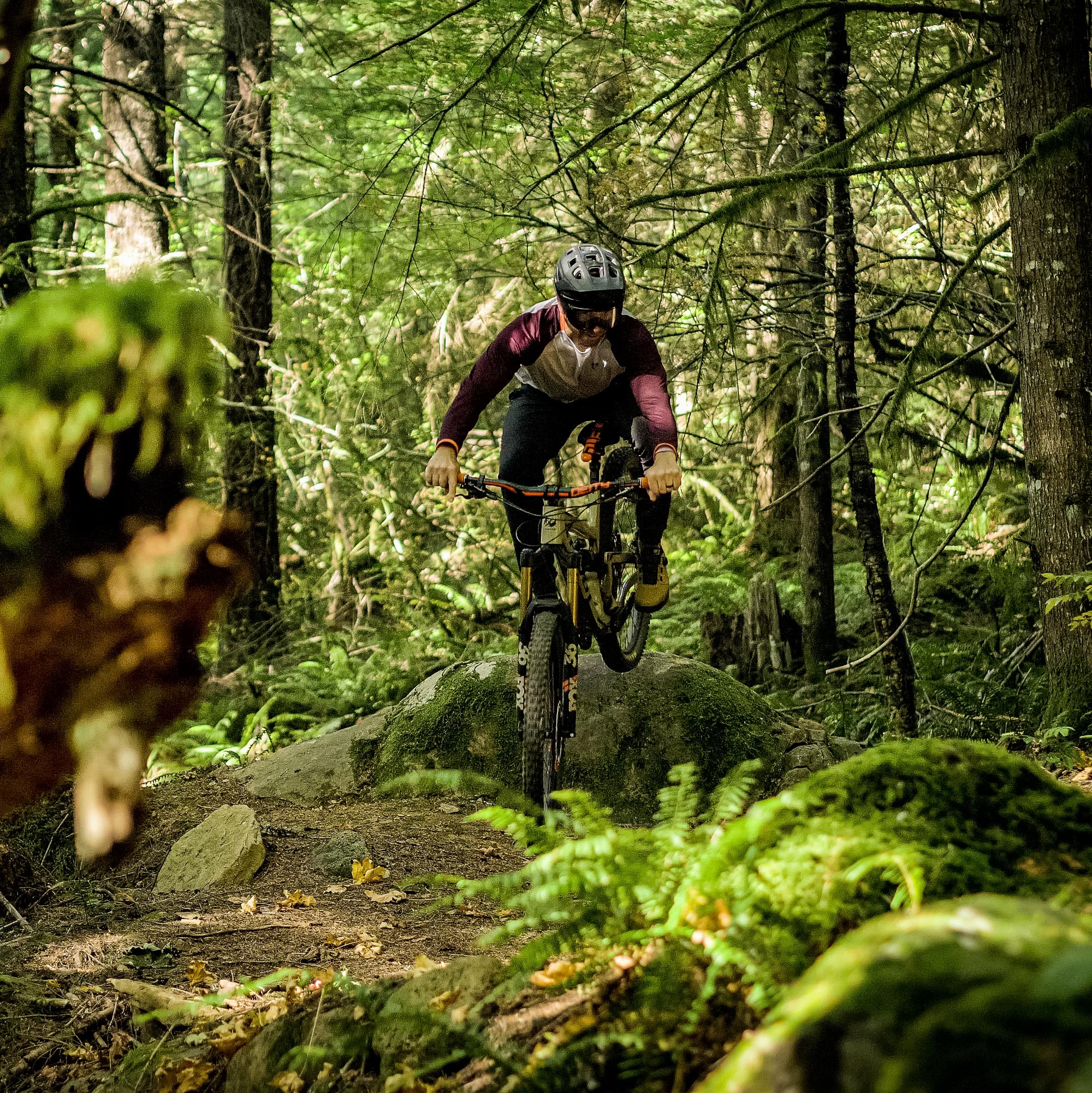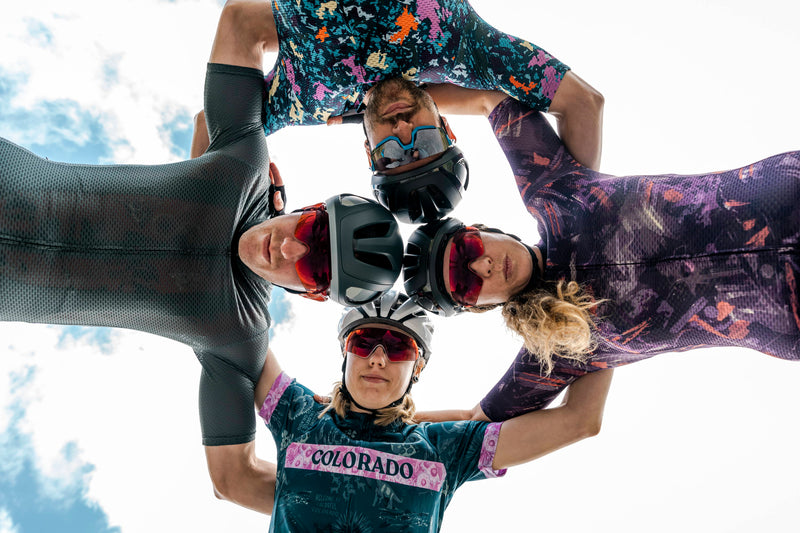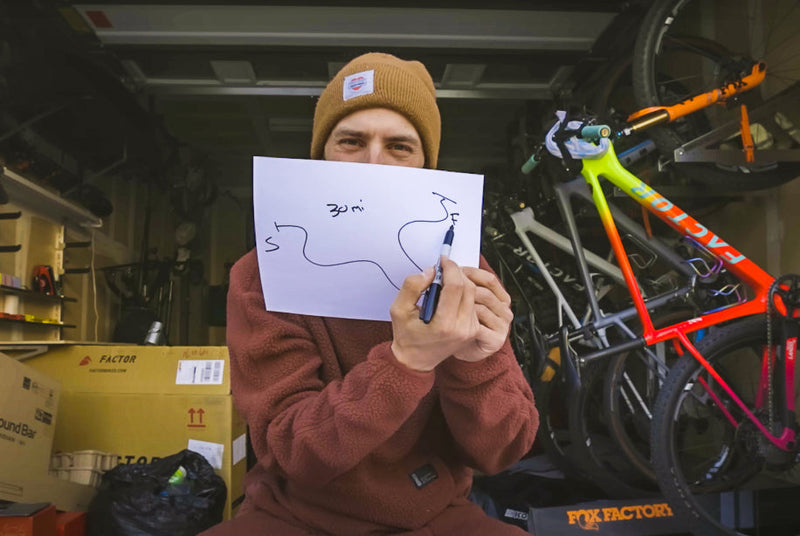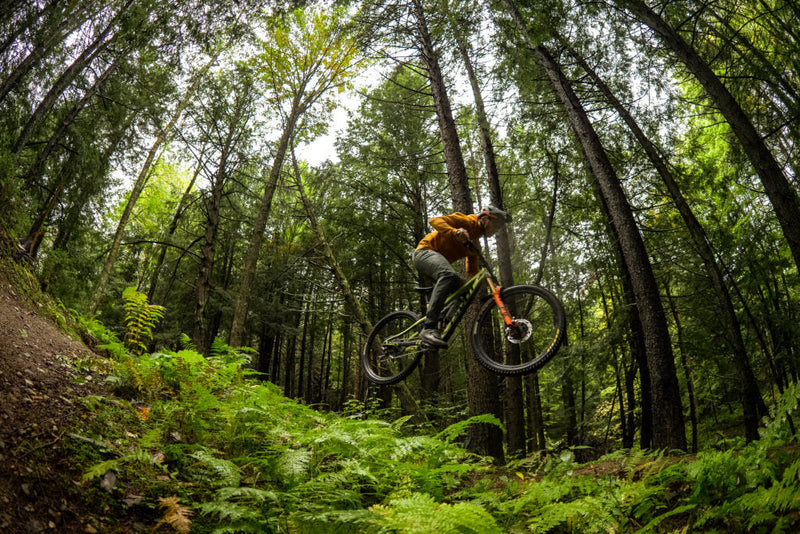Underexposed is a series dedicated to showcasing trails around North America that fly under the proverbial radar for most riders. PEARL iZUMi athlete Brice Shirbach has seen firsthand what sweat equity can mean among mountain bikers and its impact on the places we call home, and this series will look to help open eyes and shift our attention to some of the brilliant riding that exists in places both unexpected and unheard of.
Extending northward from Lassen Peak in Northern California to Mount Lytton, about 100 miles north of the Canadian border in British Columbia. The Cascades might be my favorite range of mountains in all of North America. It’s a chain dominated by volcanic peaks. The highest of which is Mount Rainier, standing a lofty 14,400+ feet above sea level, and often the most prominent skyline feature within a 100-mile radius of the summit.
The Cascades’ close proximity to the Pacific Ocean, coupled with the west-to-east prevailing wind direction, leads to incredibly green, incredibly lush, and incredibly beautiful forests. Particularly along the western-facing slopes of the mountains. The abundance of precipitation keeps forests of large, coniferous trees, including Douglas-firs, western hemlocks, pines, spruces, and others happy along with the mild temperatures and rich soil throughout the region. These happy trees and this amazing dirt are precisely what I love the most about the Pacific Northwest. And there’s plenty of that and more about 40 minutes east of downtown Portland, Oregon, just off the Mount Hood Highway at the Sandy Ridge trail network.
There are close to 17 miles of directional trail at Sandy Ridge, nestled neatly among the foothills of Mount Hood, one of the most revered mountains in all of the Cascade Range. The trails are situated on land managed by the Bureau of Land Management land through a partnership with the Northwest Trail Alliance. Sandy Ridge was actually my introduction to riding in the Pacific Northwest during the now-defunct Oregon Enduro Series in 2013. It would prove to be an incredibly influential experience and was a brilliant showcase of these fabulous trails. There are close to 1,300 feet of prominence from top to bottom, and most of the trail situated in the upper third of the mountain are advanced and expert oriented. That’s where you’ll find some of Sandy Ridge’s more exposed lines and technical trail riding, all accessible via a reasonably comfortable paved climbing road. Plus, it’s where my racing, as mentioned earlier, ended when I ran out of spare tires and plugs on Upper Hide and Seek. There are plenty of flowy options as well, and my initial experience here planted some rather fond memories of these flowy options, which came as a pleasant reprieve during some of my pre-rides back in 2013. If I’m being honest, I have spent most of my professional riding career actively avoiding purpose-built flow trails whenever I choose between riding options. I generally favor steep, more technical trails where numerous line choices are available to push modern trail and longer travel enduro rigs to their limits. For this particular ride, I was kind of craving some of that flow I so fondly remembered from years ago.
Hide and Seek was one of the first trails to go in at Sandy Ridge when the system opened in 2010 after several years of planning and development between the BLM, the International Mountain Bicycling Association and NWTA. And is still arguably the most popular trail in the system. Three years after Sandy Ridge was open to the public, Flow Motion was added to the fray, and when combined, the two trails offer just under 1,000 feet of descending for two and one-half miles. The ride takes you through some stunning stretches of lush Cascadian forest, with perfect corner pockets, doubles, berms, and chicanes to help you carry your speed and grin between one fuzzy green tree after another.
For me, the Pacific Northwest is paradise. It’s a corner of the planet teeming with life, whose skylines are often punctuated by one iconic summit after another. The geologic history here is relatively new, at least compared to the ancient landscape and mountains found on the opposite end of the continent, and that is mostly why the dirt is so lush, the trees so green, and the trails so brilliant. Well, that, along with some hard-working advocates and land managers dedicated to preserving land for riders of all stripes.
It’s funny how things work sometimes. Back in 2013, Sandy Ridge opened my eyes to just how good purpose-built flow can be. It only took seven years and a trip across the country to have it serve as a reminder that a bit of flow is pretty damn good for the soul, especially when it’s served up alongside some fuzzy green trees.

















Comments